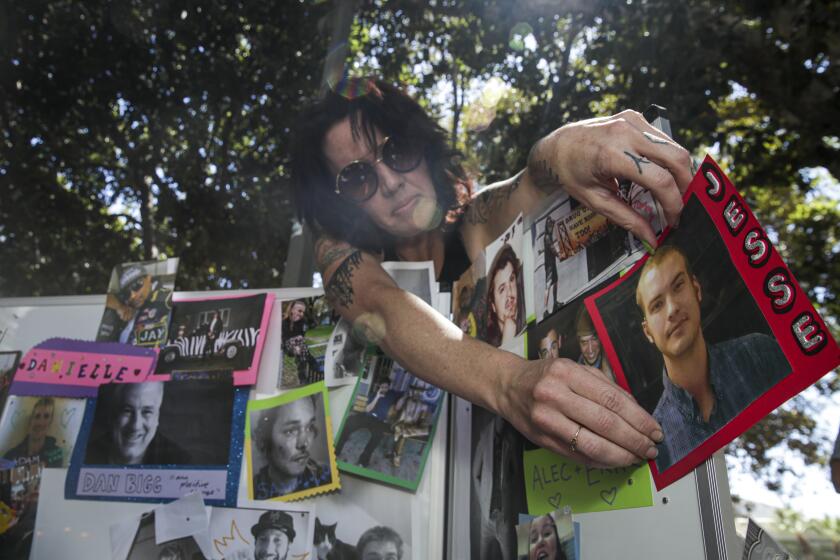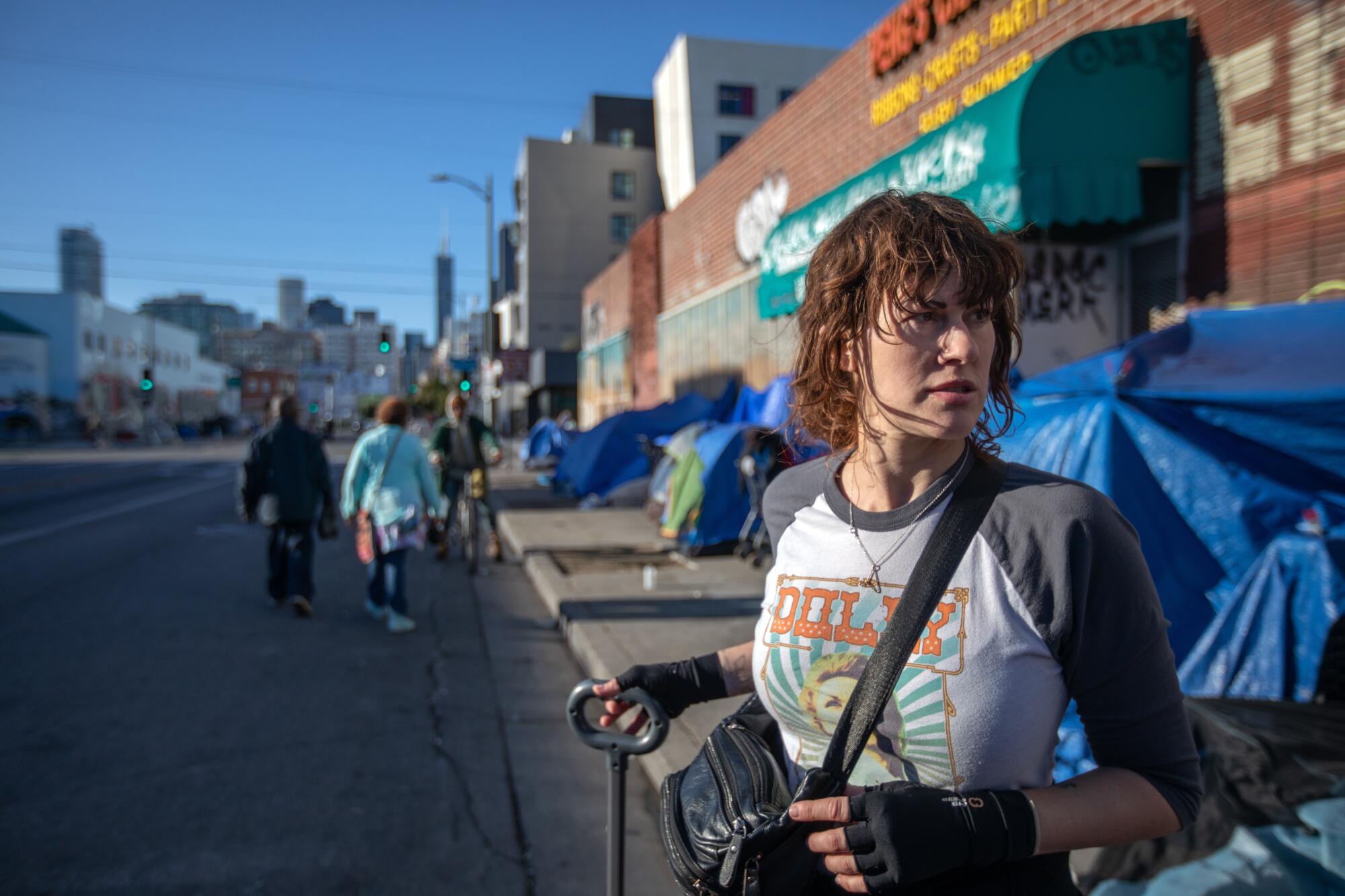
- Share via
Every day that she can, Bella walks through the glassy door on a spartan stretch of Los Angeles that is emblazoned with the motto, “Save a life! Narcan Here.”
Narcan is indeed here — the white boxes of naloxone spray that can pull someone out of an opioid overdose. So are clean syringes. Coffee. Condoms. Couches to sprawl on. Free clothing, blankets and shoes for the taking. COVID-19 tests. Cookies. Bandages. A homemade soup of black-eyed peas and potatoes, warmed in an Instant Pot.
The 42-year-old had recently rescued someone with the naloxone she picked up here, after a friend overdosed on San Julian Street. But it isn’t just Narcan, or free shirts, or hot soup that bring her back day after day. Here, “they’re really saving my life,” said Bella, as she is known on the street. “They care. A lot of people say they care and they don’t. These guys actually care.”
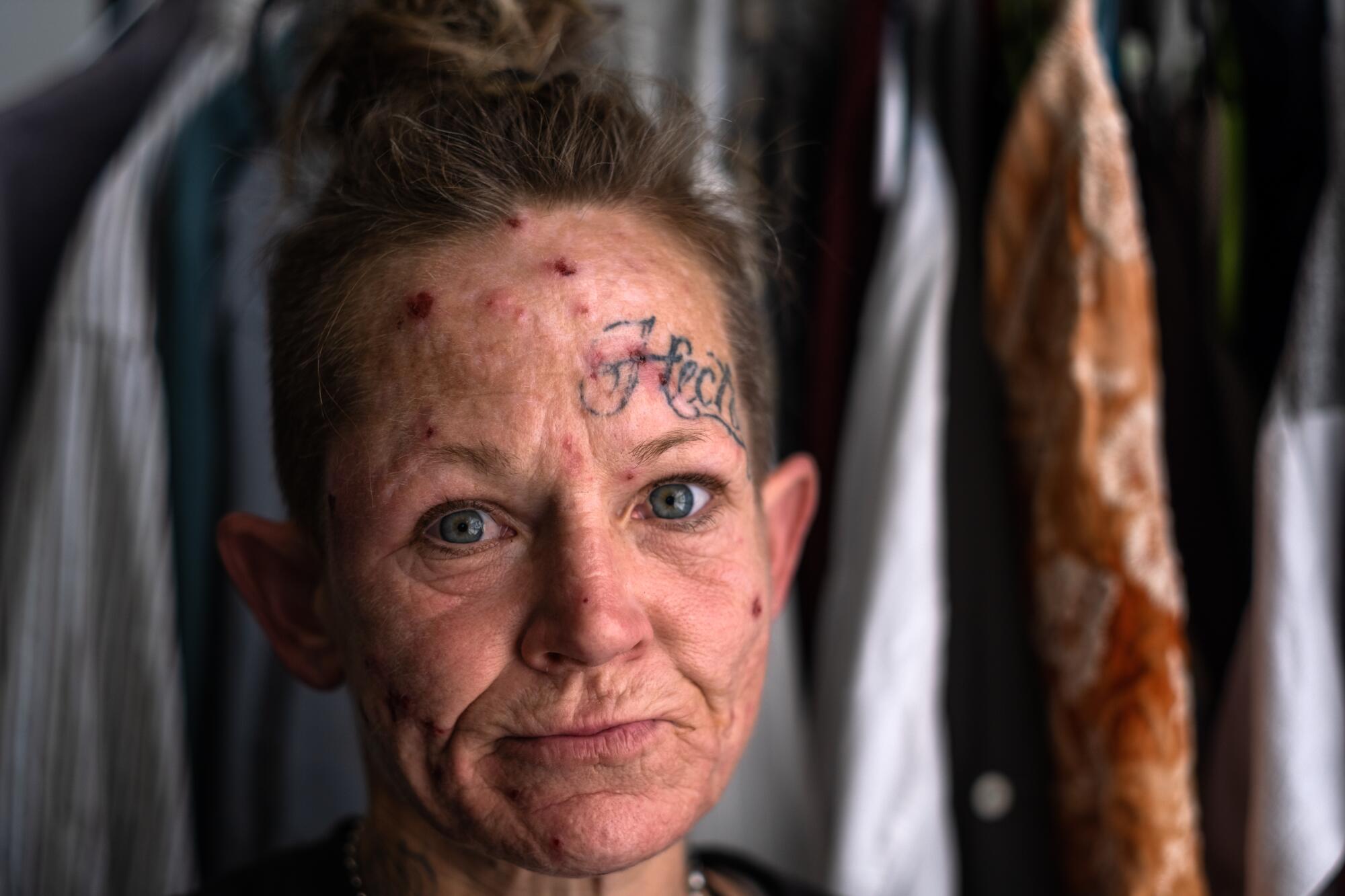
It is a skid row sanctuary that grew out of a state decision to invest in harm reduction — practical strategies focused on reducing the harmful effects of drug use — as deaths from opioid overdoses began to surge in California and across the country. It is a philosophy endorsed by President Biden and broadly backed by public health officials, yet programs that provide syringes, naloxone and other harm reduction tools are often skimpily funded, limiting their reach.
The California Harm Reduction Initiative provided $15.2 million from the state to support dozens of syringe services programs after lawmakers approved the funds in 2019. But the money dries up later this year — and there is no funding that specifically replaces that $15.2-million allocation in the budget proposed last month by Gov. Gavin Newsom, according to the California Department of Finance. The program could peter out as state officials project a deficit of $22.5 billion.
With opioid overdoses showing no sign of abating, more regular citizens are carrying Narcan, the medication that can reverse the damaging effects of an overdose.
For the Sidewalk Project, which runs the skid row center that Bella relies on, the money “completely changed our lives,” said Executive Director Soma Snakeoil. The organization received roughly $397,000 from the grant over three years. With that funding, “we became a lifesaving organization.”
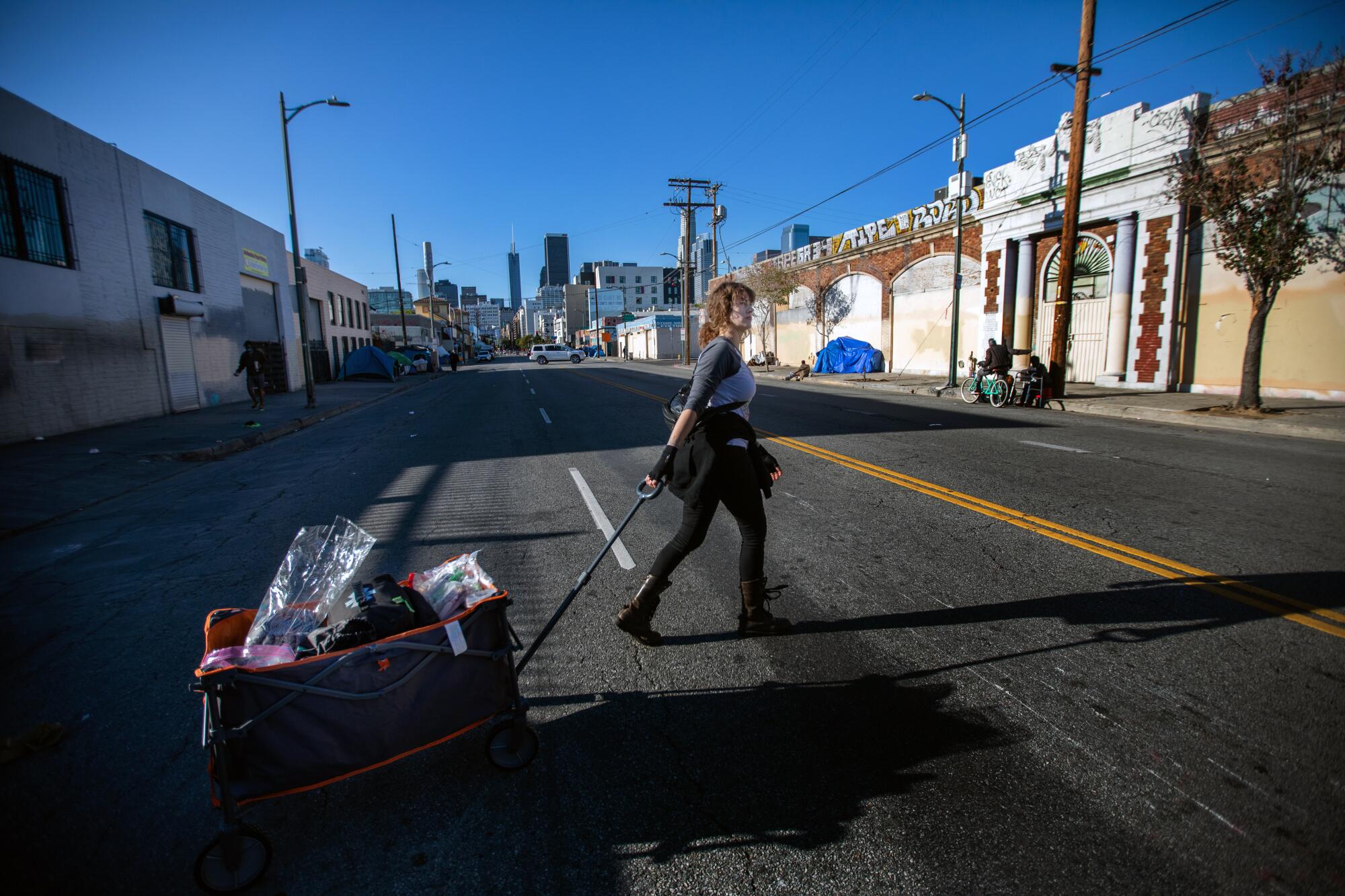

The group could hire and pay staff instead of relying solely on the free time of volunteers. It could sustain ongoing services instead of sporadically hosting events. In January, it opened a skid row drop-in center focused on the needs of women, especially those who use drugs or do sex work.
No one of any gender is turned away for supplies, Soma Snakeoil said, but for most of the week the space is dedicated to serving women, whether cisgender or transgender. It aims to be a respite from the hazards of skid row, a place where they can feel safe plugging in their phones and falling asleep on the couch.
The state grant that helped transform the Sidewalk Project now makes up more than a third of its budget, said Chief Operating Officer Stacey Dee. Out of its 11 employees, two are paid entirely out of the California Harm Reduction Initiative funds and three — including its executive director — rely partly on the state grant for their salaries.
The National Harm Reduction Coalition, an advocacy group that received some of the funding to assist grantees, is pushing for more funding for such programs, hoping to sway state lawmakers to budget $61 million to bolster them over the next four years. The California Department of Public Health said it had secured an additional $2.2 million in federal funds to extend the current grants until the end of December, but not beyond that.
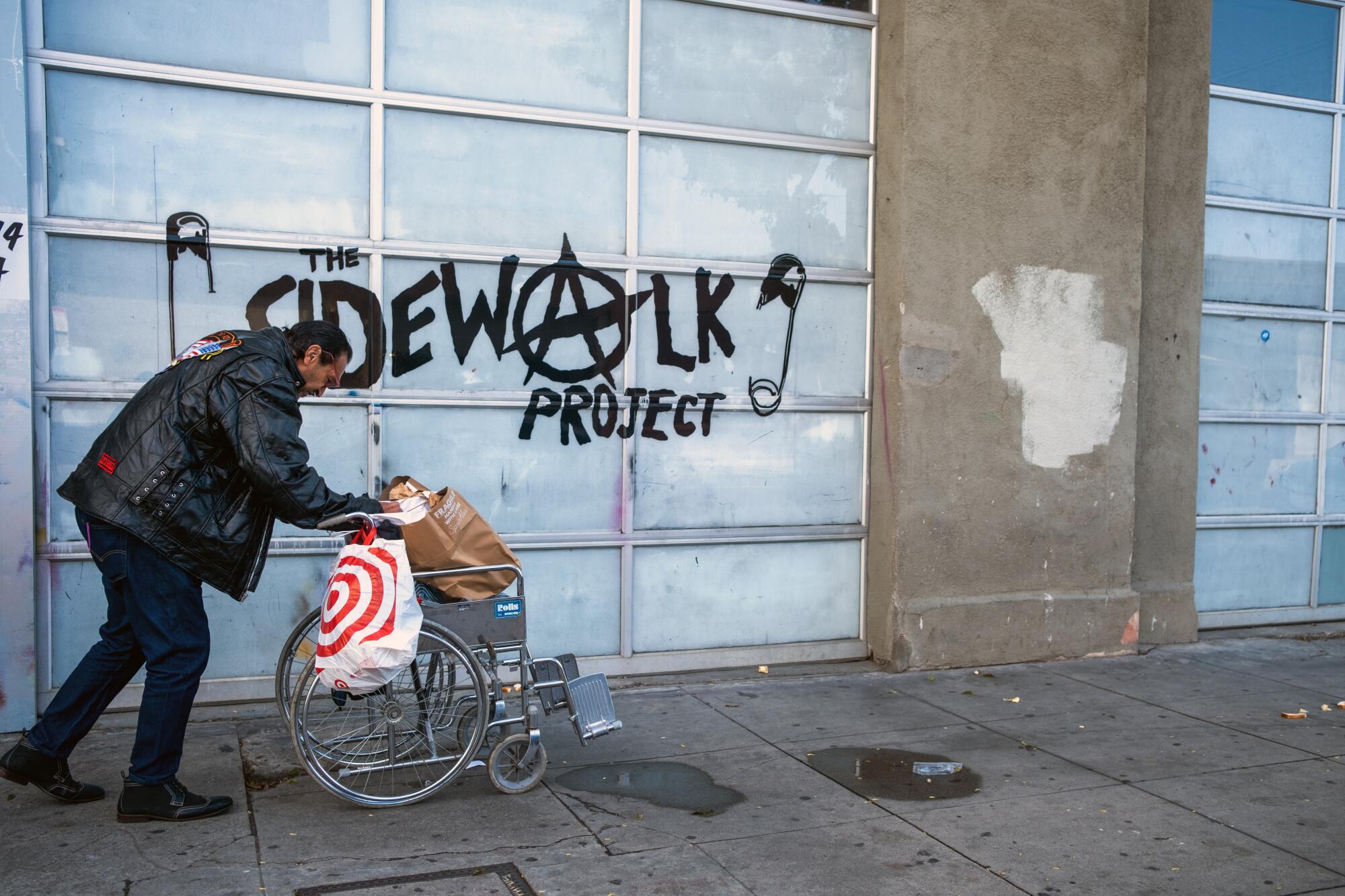
State officials pointed out that the budget plan put forward by Newsom does include $4 million in added spending over time to improve access to naloxone at syringe programs and other community providers, which the Department of Public Health said would “streamline the process of getting naloxone into the hands of Californians most likely to be present during an overdose event.”
And there is ongoing funding for a “clearinghouse” of supplies such as syringes meant to help whittle down rates of HIV and viral hepatitis.
Still, syringe programs have been alarmed by the evaporation of a source of day-to-day funding to hire staff and handle other operational expenses like rent and utilities.
The grant “was a game-changer for the whole state,” said Denise Elerick, founder of the Harm Reduction Coalition of Santa Cruz County, one of the 37 programs that benefited from the funding. “I try not to imagine what would happen if this initiative doesn’t continue, because it would mean programs like ours laying off and losing staff.”
For programs helped by the California Harm Reduction Initiative, the median grant was $112,500 annually — nearly half of the median budget for groups getting the money, according to an analysis by the research institute RTI International.

The results of the added spending have been “pretty dramatic,” said Barrot H. Lambdin, an RTI epidemiologist. In 2021, syringe programs that got the state money provided 75% more syringes, handed out naloxone to 73% more people, and provided nearly twice as many test strips to detect fentanyl as syringe programs that did not get the initiative money, the RTI analysis found. They were also much more likely to offer people buprenorphine — a medication to help people cut back on opioid use.
Soma Snakeoil said the nonprofit has been hustling to get other grants, but fears that without a replacement, the Sidewalk Project may be forced to cut back on services or even close.
If that happens, “people will die,” said Jen Elizabeth, its director of street engagement and services.
And the deeper reason, she said, is that “people will lose a spot that they were safe.”
In the back of the skid row center, past a painted mural of calla lilies, women gathered one afternoon to learn how to defend themselves, practicing simple techniques to break an unwanted grip or wrest free from being choked.
“One guy beat the ever-loving crap out of me,” one told the others before they began. “He punched me five times in the face.
“It was my bad,” she said. “I was stupid. I shouldn’t have trusted anybody.”
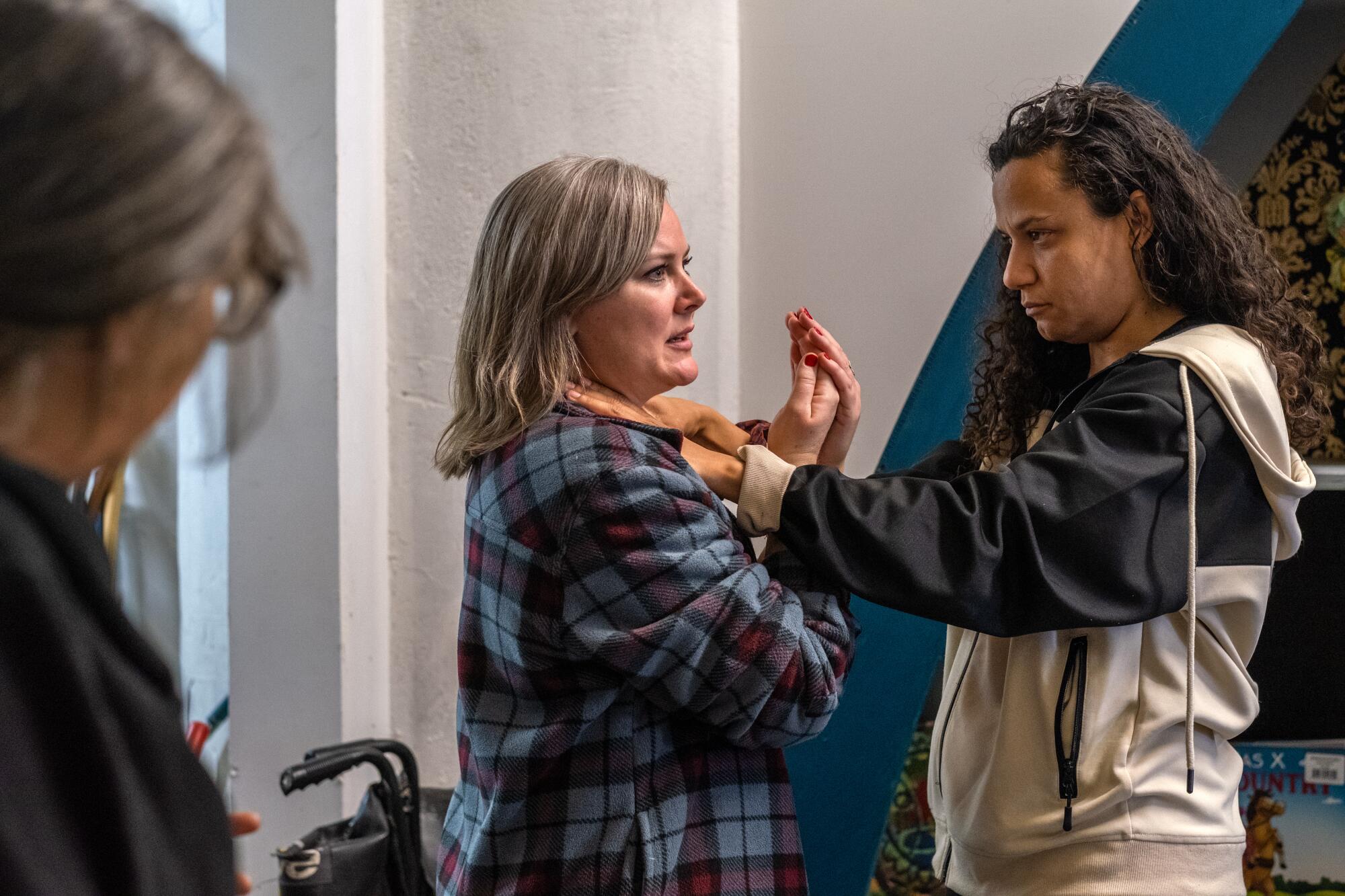
When something scary happens, “sometimes you freeze. And sometimes you fight. Sometimes you get away. And sometimes you do whatever is asked of you in the moment to make it over,” instructor Vanessa Carlisle told the group before the lesson began. All of those are forms of self-defense, Carlisle said, and “no matter what you do, you’re surviving it. You survived it. You did great.”
“And being surprised by somebody being horrible to you doesn’t make you dumb,” Carlisle added. “It makes you human.”
The California money has been crucial to sustaining syringe programs in areas where local officials do not support them, because “for a lot of them, it’s their only source of funding,” said Jenna Haywood, associate director of community mobilization for the National Harm Reduction Coalition.
In L.A. County, the number of deaths linked to fentanyl rose from 109 in 2016 to 1,504 in 2021, the county public health department found.
The nonprofit Inland Empire Harm Reduction credits the state money with making it possible for the group to launch a program that provides sterile syringes — the first in Riverside County.
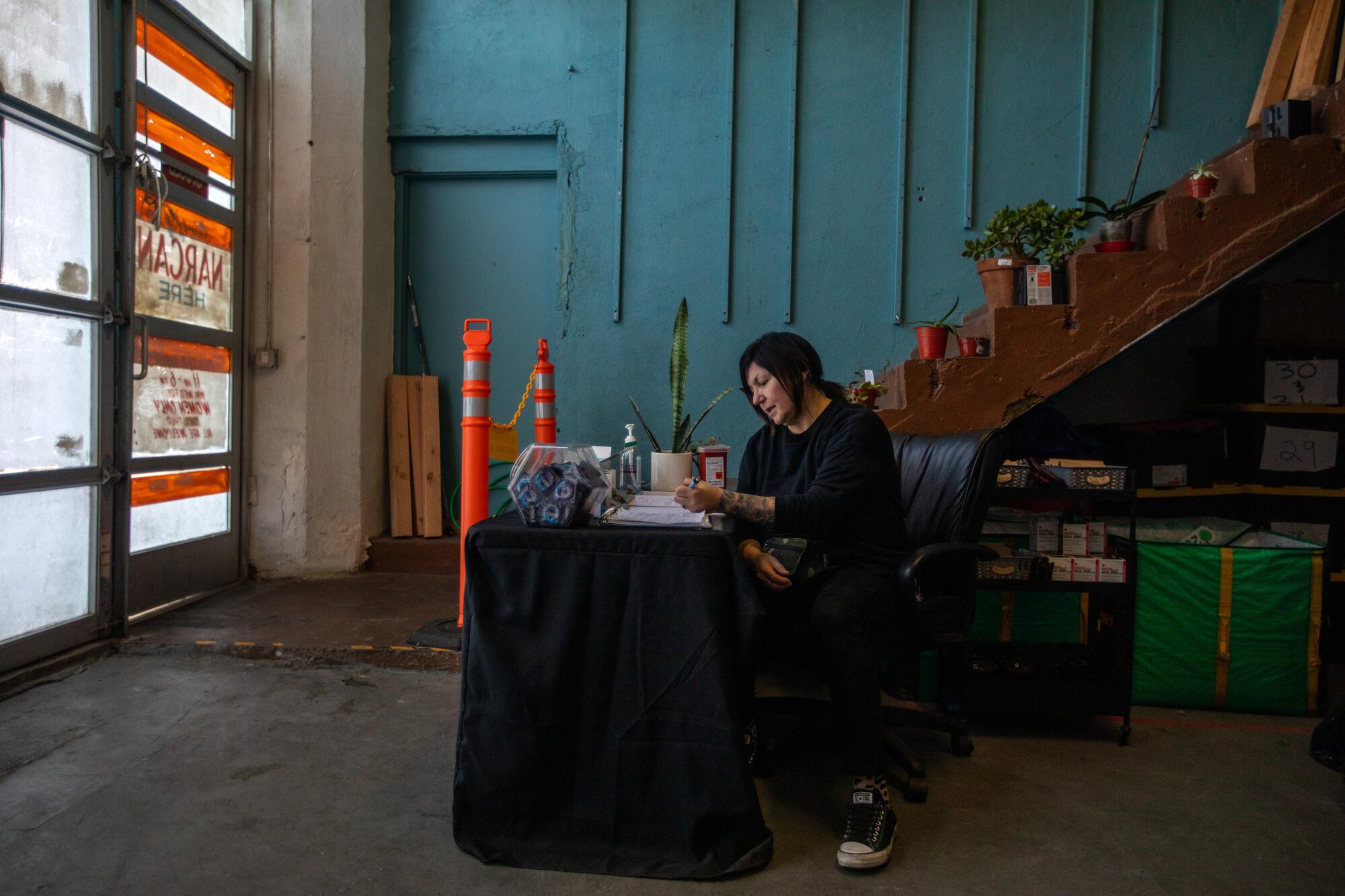
The California Harm Reduction Initiative funding helped the group hire some staff and pay for an office, instead of relying solely on volunteers and working out of a house, said outreach specialist Audrey Angel. At one point, it was the nonprofit’s only source of funding. The group now provides mobile services three days a week, offering up sterile syringes, naloxone and a smattering of other supplies including food, clothing, menstrual kits, COVID-19 tests and pet food.
Haywood argued that such operational funding is crucial if the state wants to successfully thwart opioid overdoses with Narcan.
State figures show that harm reduction groups have played an outsize role in getting naloxone into the hands of people who will use it: They have received less than a third of the free naloxone provided through a California state program, yet account for almost 60% of the overdose reversals reported as a result.
Just handing out Narcan is not as effective as distributing it through the groups that are trusted by people who use drugs, argued Bethany Wilkins, co-founder of the Yuba Harm Reduction Collective in Nevada County. If people are trying to plan an outreach route, but “don’t have the pulse on where encampments are, or the best way to reach people who use drugs in their community, there can be a lot of lost hours and lost energy” doing things “in a way that’s not actually in touch with what’s needed,” Wilkins said.
It makes a difference that “we are people who use drugs, people in recovery, that you can trust.”
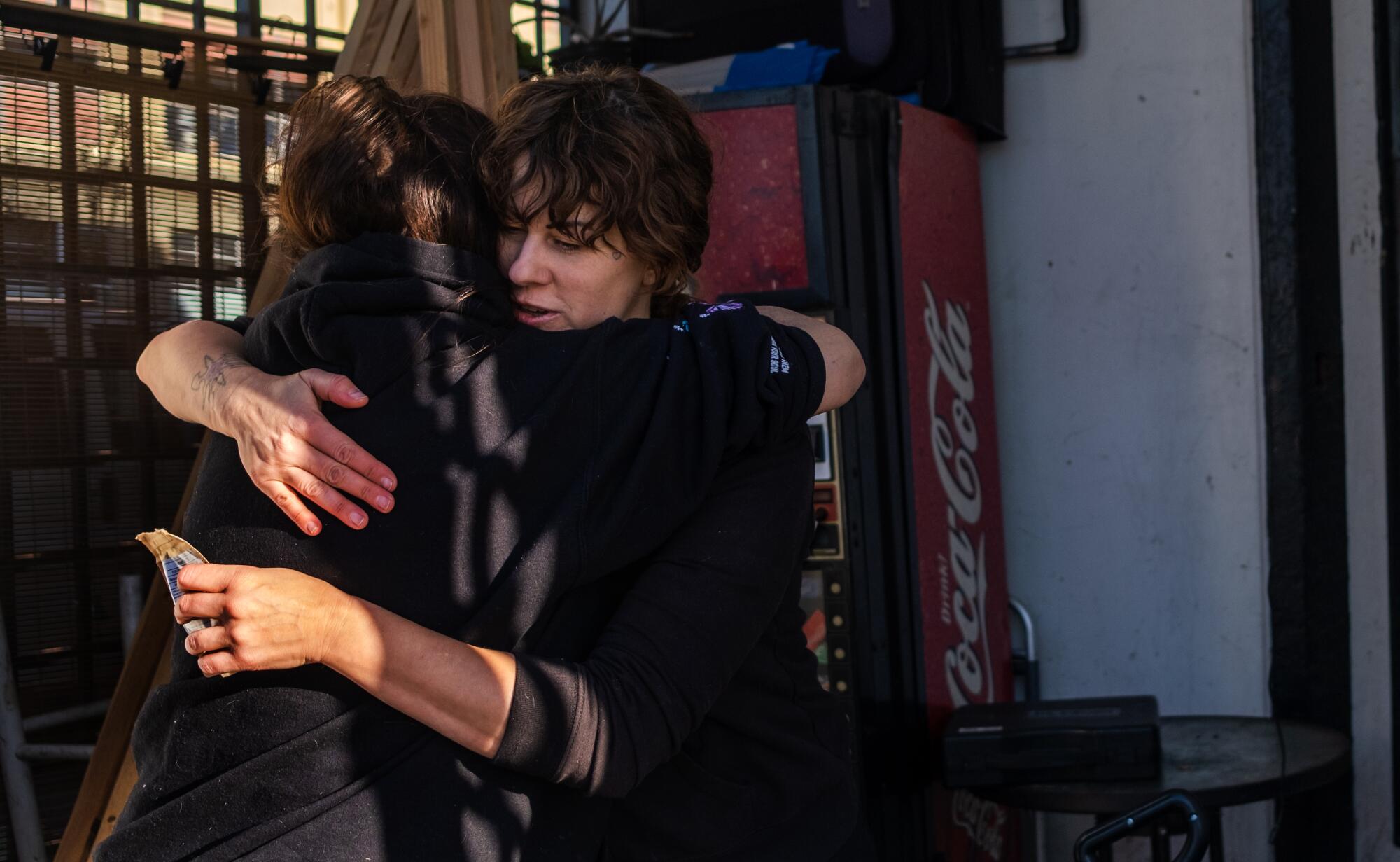
The Sidewalk Project has tallied more than 1,000 overdoses stopped with the naloxone it handed out last year, Soma Snakeoil said. But when Bella says the group is saving her life, she talks not just about naloxone or other supplies, but its staffers helping her try to find housing, and the way that “they treat everybody the same.”
A woman in her 50s, who stops regularly at the center, said that “all I want is a place where I can go and talk to somebody without them judging me.”
“It’s been a whole lot of disarray in my life,” said the woman, who began to cry as she recounted abuse she had endured after her mother brought her to skid row as a child; the baby she had as a result; the drugs and alcohol that had failed to help. She declined to give her name.
“The only place I found,” she said, “was here.”
More to Read
Sign up for Essential California
The most important California stories and recommendations in your inbox every morning.
You may occasionally receive promotional content from the Los Angeles Times.

